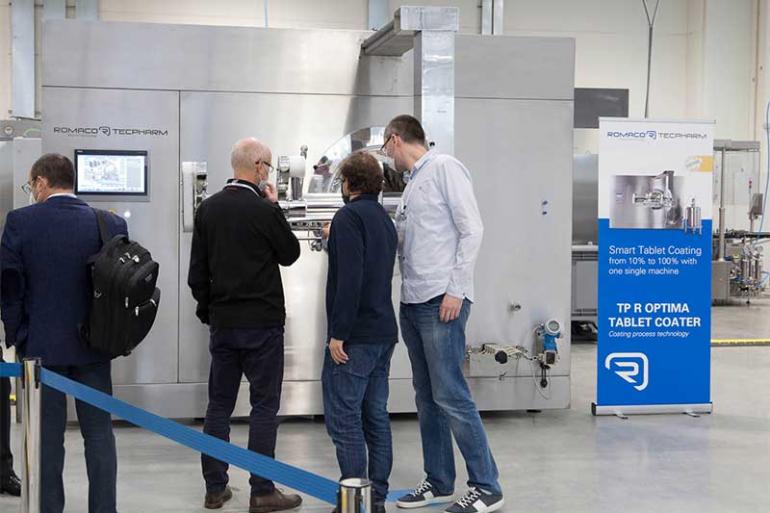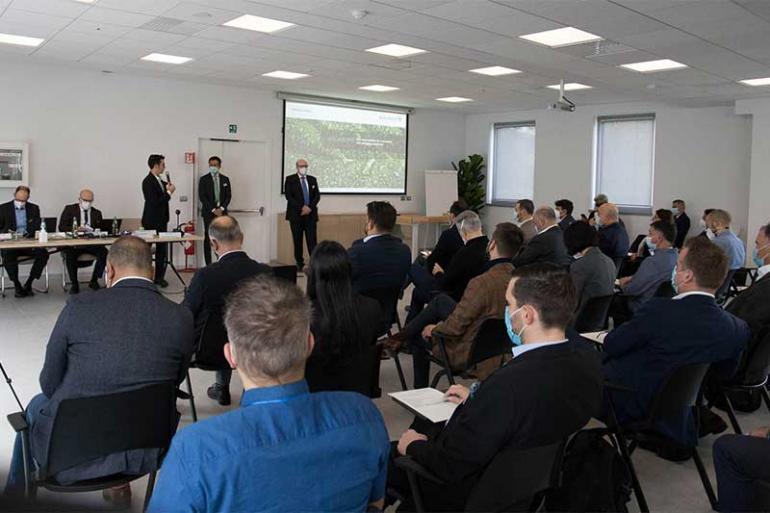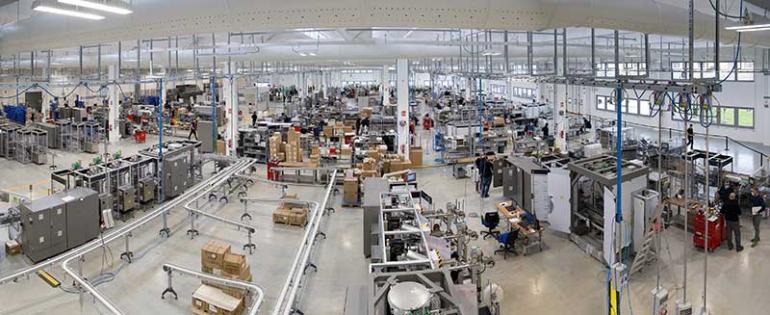Romaco inaugurates the new plant in Italy
A five-day open house was held in mid-November to celebrate the recent move by Romaco S.r.l., the Romaco Group’s Italian subsidiary, into a modern new building in Bologna Pianoro. More than 200 current and prospective customers from Europe, Russia and the US accepted the invitation to Italy to learn more about the single-source supplier’s newest technologies first-hand.
During numerous presentations and live demonstrations, visitors gained some good insights into the comprehensive portfolio of the pharmaceutical machinery manufacturer - from fluid bed processors by Innojet, tablet presses by Kilian and perforated coating pans by Tecpharm through aseptic powder and liquid filling technologies by Macofar as well as blister and strip packaging lines by Noack and Siebler to cartoners and final packaging solutions by Promatic.

“Our open house in Bologna enabled us to share Romaco’s evolution over the last few years with visitors”, explained Jörg Pieper, CEO of the Romaco Group. “We haven’t simply acquired more space; we’ve also grown generally as a company and have duly invested in the expansion and further development of our product range. We’re now in a position to offer our users in the pharmaceutical industry the right machine for every process step – either standalone or in-line. At the same time, our technologies are engineered to help our customers reduce their carbon dioxide emissions permanently.”

The move by Romaco’s Italian production subsidiary into modern new premises in Bologna Pianoro was completed in several stages in summer 2021. This 15.000 square metre facility provides ample space for manufacturing primary, secondary and final packaging solutions from Macofar and Promatic. More than 190 people are currently employed at the Romaco S.r.l. plant in Bologna. Truking Technology Ltd., the Romaco Group’s Chinese parent, publicly announced its intention to invest in a new building back in summer 2017. That plan has now become reality.
The spacious building was designed from beginning to end with sustainability aspects in mind. In addition to green electricity and the construction of a solar roof, the heat-reflecting blinds and the energy efficient ventilation and filtration system are major factors in systematically reducing carbon dioxide emissions. The 8500 square metre outdoor area with native plants and a wetland biotope moreover ensures a climate-friendly work environment.



















